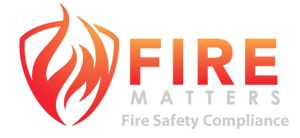Fire Service Contractors and Third-Party Software: Hidden Risks for the Responsible Entity
In recent years, fire service contractors have increasingly turned to third-party software systems to manage scheduling, site data, asset registers, inspection reports, and statutory compliance records. These platforms promise operational efficiency, streamlined workflows, and digital record-keeping—but they also introduce risks that are often overlooked by building owners, managers, and other Responsible Entities.
Because the Responsible Entity remains legally accountable for maintaining verifiable fire safety records that include the required information, any weaknesses in the digital systems used by their service provider can expose them to compliance failures, enforcement actions, or costly disputes. Understanding these risks is critical to ensuring the integrity and availability of essential fire safety documentation.
- Records May Not Be Available Onsite When Needed
Fire safety legislation generally requires certain records to be accessible on-premises. This includes maintenance logs, defect notices, test results, licensing confirmation, performance-based evidence, and occupancy-specific fire safety information.
However, many contractors using third-party software store all records exclusively in remote databases or cloud environments. As a result:
- Fire authorities or auditors may attend site and find no physical or digital records available.
- Emergency responders may be unable to confirm service history or identify outstanding faults.
- The Responsible Entity may be deemed non-compliant, even though the contractor insists the records “exist in the system.”
When a Responsible Entity cannot produce records immediately upon request, the liability and penalties fall on them, not the software provider or the contractor.
- Records Can Be Edited, Overwritten, or Deleted
Many third-party platforms allow contractors to modify historical entries, replace reports, or delete past data without generating an audit trail. This creates several issues:
- There is a possibility that Inspection records can be changed after they have been created, making it impossible to prove the original condition of assets.
- Disputes over defects, maintenance failures, or missed testing can become impossible to verify.
- A contractor experiencing internal issues—or attempting to limit liability—may alter older records.
If an incident occurs (such as a fire, enforcement action, insurance claim or system breakdown ), unverifiable or suspect records could leave the Responsible Entity exposed to:
- legal liability
- insurance challenges
- regulatory penalties
- unexpected repairs
The security and integrity of fire safety documentation are not optional; they are essential requirements for establishing, demonstrating, and maintaining statutory compliance.”
- Data Access Can Be Lost Due to Commercial Disputes
One of the most underestimated risks is the relationship between:
- the Responsible Entity
- the fire service contractor
- the third-party software supplier
If a dispute arises between the contractor and the software provider—for example:
- unpaid fees
- licensing disagreements
- termination of service
- unexpected closure of the software company
—the contractor’s access may be suspended or terminated.
When this happens, the Responsible Entity may suddenly find there is:
- No access to historical maintenance records
- No way to export or recover compliance data
- No proof of service for months or years of work
Even if the Responsible Entity has paid the contractor, they may still have no legal standing with the software vendor to recover the data. Ultimately, the Responsible Entity bears the consequences, because statutory record-keeping cannot be outsourced.
- Cloud-Only Storage Leaves No Local Backups
If the platform relies solely on cloud access, the Responsible Entity becomes vulnerable to:
- internet outages
- system downtime
- software outages
- cyber incidents
- vendor system failures
During these periods, critical fire safety information is completely inaccessible. Fire authorities will not accept “the system is down” as an excuse for missing mandatory records.
- Lack of Transparency and Data Ownership
Many third-party systems are designed around contractor convenience—not the compliance obligations of building owners. Common issues include:
- unclear ownership of uploaded data
- limited ability for the Responsible Entity to export or retain their own records
- subscription-based access where data may disappear if the contractor stops paying
- inability to trace who created, edited, or deleted a record
If the Responsible Entity cannot access, verify, and retain copies of all fire safety documentation, they ultimately lose control of their statutory responsibilities.
- Protecting the Responsible Entity: Best Practices
To avoid these risks, Responsible Entities should adopt proactive governance over fire safety data:
Require records to be provided directly to the Responsible Entity
Whether via PDF, physical copies, or a secure shared drive—never rely solely on the contractor’s platform.
- Ensure the Responsible Entity maintains local, onsite copies
These should be accessible to auditors, fire authorities, and building managers.
- Specify data ownership in contracts
Contracts should clearly state that all fire safety records belong to the Responsible Entity.
- Require immutable, audit-trail-protected record formats
Records should not be alterable after submission.
- Implement regular reviews of documentation quality and availability
Confirm that reports are complete, accurate, and aligned with regulatory timeframes.
- Maintain contingency plans
Plan for contractor changes, software outages, and vendor insolvency.
Conclusion
While digital platforms have transformed the fire services industry, they also carry significant risks that many Responsible Entities are unaware of. When a fire service contractor stores compliance records exclusively on third-party software, the Responsible Entity may be exposed to:
- lost or inaccessible records
- altered or unreliable documentation
- disputes that shut off access
- failed audits and regulatory action
Ultimately, the legal obligation for maintaining and producing accurate fire safety records always sits with the Responsible Entity. Ensuring that these records are accessible, verifiable, and secure—independent of any contractor or software vendor—is essential for compliance, risk management, and building safety.

